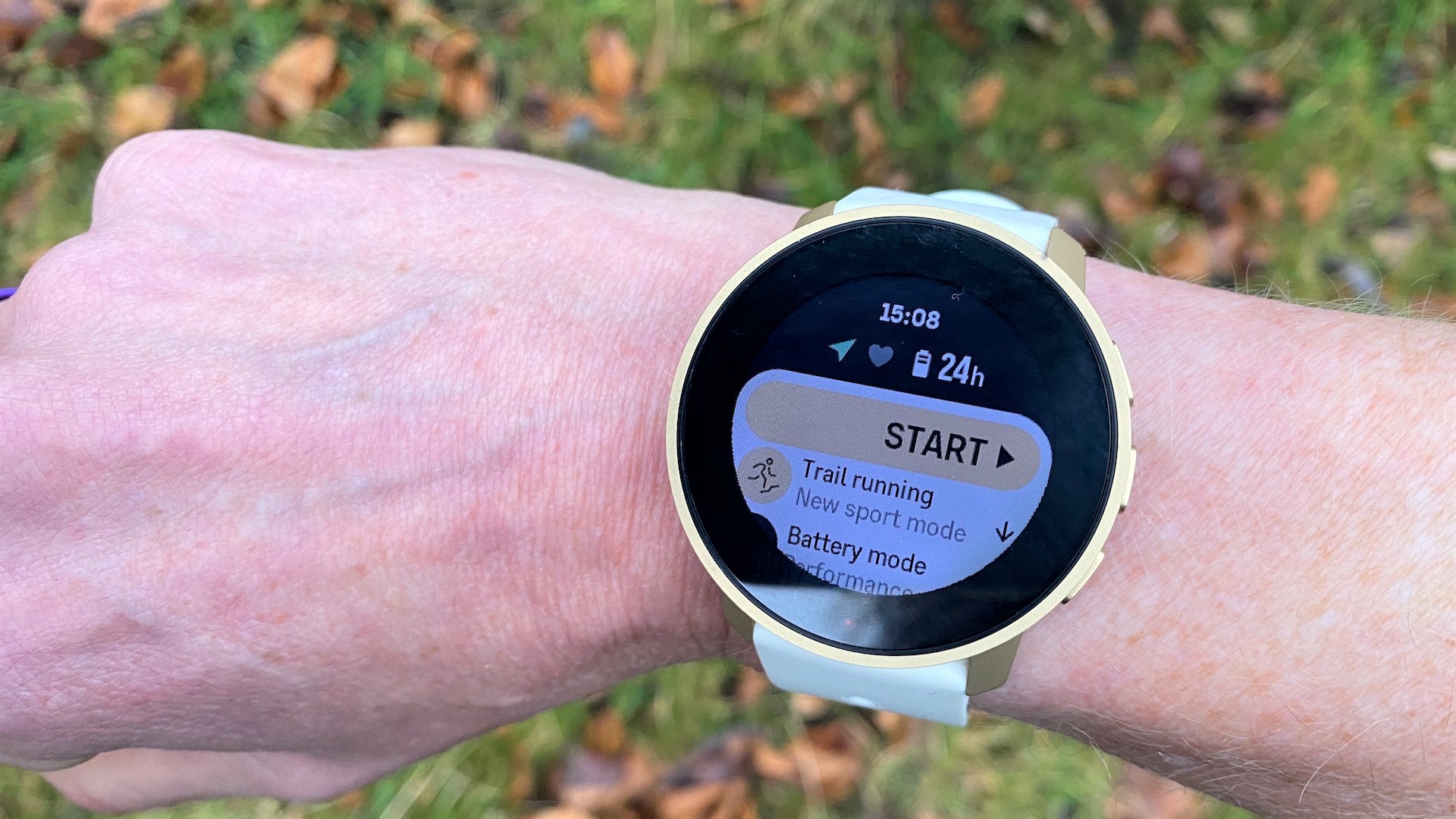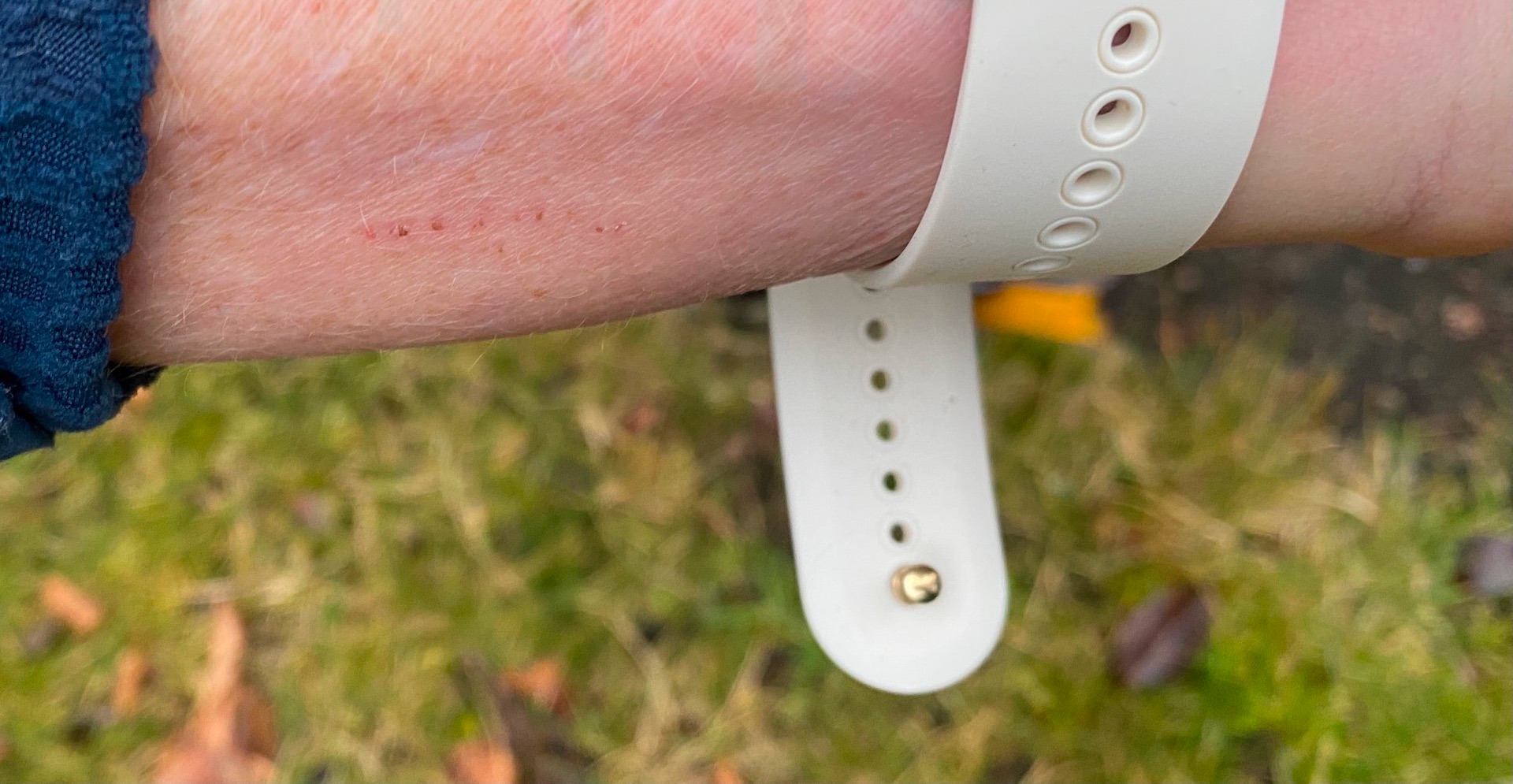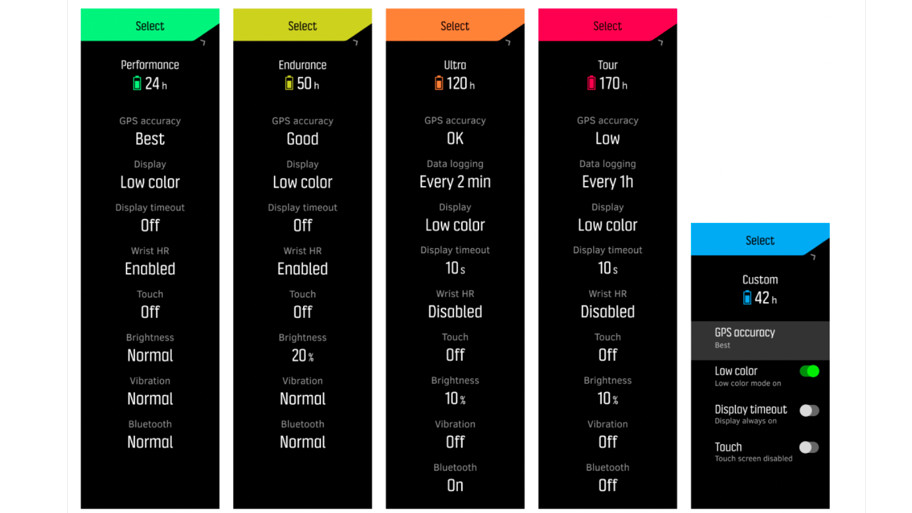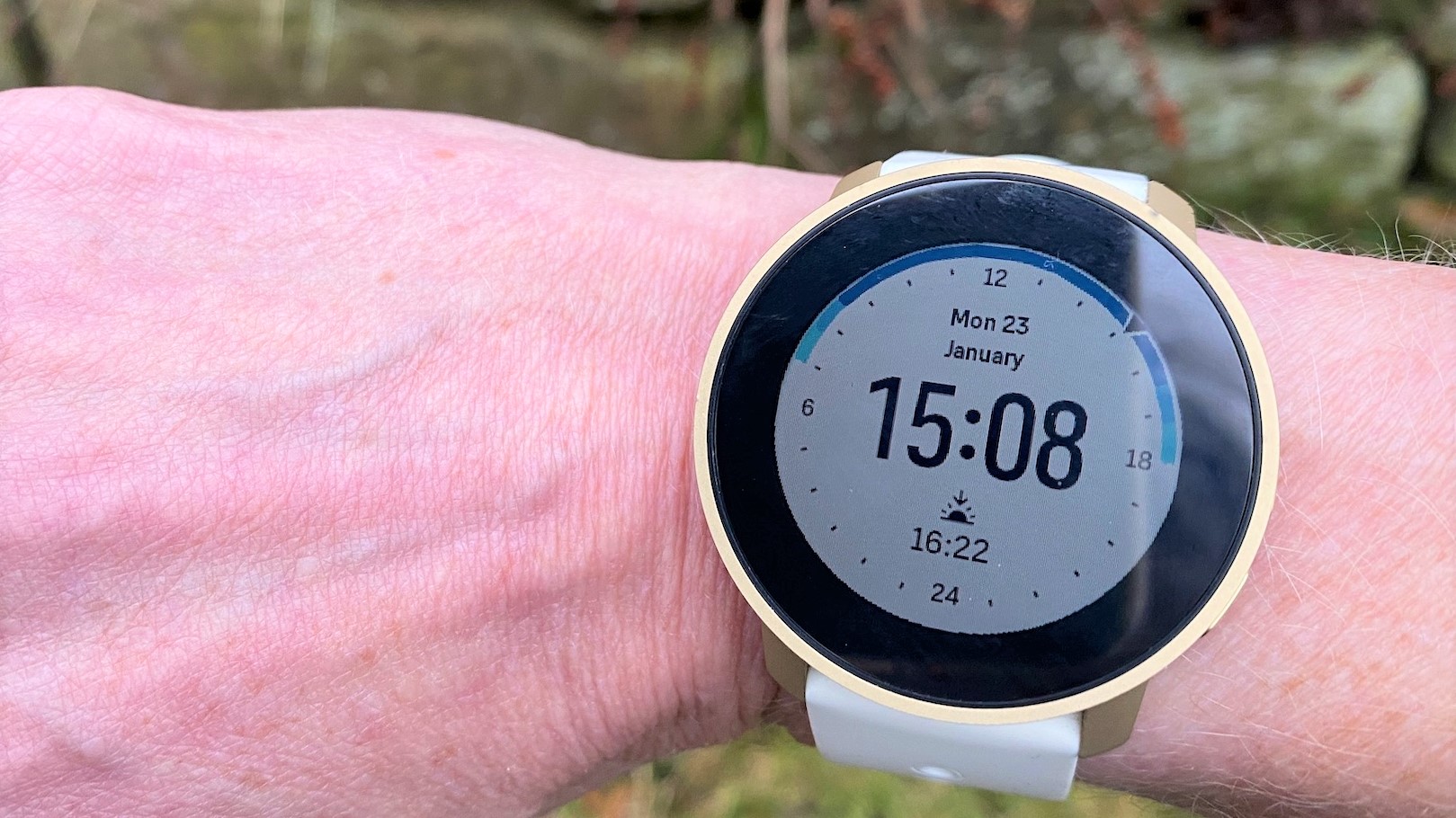Advnture Verdict
The new Suunto 9 Peak Pro GPS watch has all the features you would expect from a sports watch and some interesting new ones. It has also been treated to some upgrades, such as the processor, GPS chipset, heart rate sensor and battery life, but it still doesn’t have multiband GNSS chipsets and there is no on-watch mapping.
Pros
- +
Very lightweight
- +
Durable build
- +
Good battery life
- +
Useful touchscreen
Cons
- -
No mapping, just breadcrumb routes
- -
Annoying strap clasp
- -
GPS quite slow to connect
You can trust Advnture
Suunto 9 Peak Pro: first impressions
The Suunto 9 Peak Pro is a neat looking GPS watch, and one of the smartest GPS sports watches I’ve seen. The design is simple yet it looks sophisticated with a choice of titanium cases in colours such as slate, sand, black, blue, gold and green. There is a cheaper stainless steel version.
Further still, it’s a durable watch that will cope with the knocks of outdoors life thanks to the sapphire crystal watch face and silicone strap. However, the strap would be much better if if had a traditional loop to hold excess strap in place. Instead, it has a little catch that is meant to stay secure in one of the watch adjuster holes. Sadly, this doesn’t work very well and it keeps coming un attached, which means the end of the strap flaps about annoyingly. (Note that you can swap the strap for another one because it’s removable.)
While the watch case is 43mm diameter, the face size is 30.48mm, which is smaller than other GPS watches such as the Garmin Enduro 2. The screen display is quite bright, although not as bright and clear as the Coros Apex 2 or Apex 2 Pro.
The Suunto 9 Peak Pro is slim at5 10.8mm, which includes the optical heart rate wrist monitor on the rear. This is where you’ll also find the connectors for the magnetic charging dock. This clicks together easily and charge is fast (just a couple of hours).
The weight is 55g including the strap and this is fairly standard these days for long battery life multi-sport GPS watches. Certainly, it doesn’t feel heavy on the wrist.
• List price: $549/ £529
• Case size: 43 x 43 x 10.8 mm
• Weight: 55g with silicone band)
• Display type: Color memory-in-pixel
• Water rating: 100 meters
• Best for: Running, hiking, cycling, swimming and snorkelling (to 10 meters)
There is a choice of eight different watch faces that are an option on the watch itself. These include traditional analog and 24-hour digital clocks, as well as some fancy modern looks. You can see the date, as well as expected sunrise and sunset on the main watch face.
There are three buttons on one side. The top button gives access to the many different sports modes. There are so many these that I lost count when scrolling through them. You can scroll by using the same button, or by touching the screen. The touch screen is really responsive.
To return to the main watch screen, you hold the middle button for a couple of seconds. This middle button gives access to information such as battery charge and mobile phone message notifications (if you have this switched on). The third button takes you to a range of functions including navigation, logbook of previous activities, media controls, timer, alarms, settings etc. The buttons are easy to use and have a pleasing click when pressed.

The watch also has a barometric altimeter, which is the considered to be more accurate than using GPS to measure details such as elevation gain.
Bluetooth connection means the watch syncs with the Suunto phone app, headphones and also with accessories, such as heart rate sensor.
The watch has controls for any music you are playing through your phone. This is actually quite useful, although it is not something I thought I would have sought out in a watch. Note that the watch doesn’t store your music, but controls music on your phone.
Suunto 9 Peak Pro: on the trail
It’s only when you come to use a watch that you can really assess what’s on offer. Just like other modern sports watches, the Suunto 9 Peak Pro tracks all the activities you can think of, from running, hiking and kayaking to circuit training and skiing. There are also modes you might not have thought you will need including stretching, hunting and roller skiing.
There are an extra couple of modes that are a bit unusual: snorkelling and 'mermaid'. Did you know that mermaiding is considered a sport? Now you do; it involves using a monofin with a fabric tail to 'move like a mermaid”. These two modes track your activity in shallow water and give details such as maximum depth and dive length. Who knows if this will be useful to you and it is an unusual mode to add to a watch but it’s there if you want to use it.
Tracking includes the usual menu of distance, duration, heart rate, pace, laps etc. There are other useful tracking features such as end of route ETA , cadence, nautical distance, intervals etc.
All this you can analyze in-depth on the interactive Suunto app. It’s a nice app to use, although I still prefer the Garmin and Coros apps.

You can also make use of SuuntoPlus options, including both SuuntoPlus sport apps and SuuntoPlus guides. These are training programmes that you can make use of. They are similar to Garmin’s Connect IQ platform although not as established since the SuuntoPlus facility is much newer than the Garmin Connect IQ.
The watch also keeps track of lifestyle habits and trends, such as sleep, steps, calories and blood oxygen. The accuracy of these is, as usual, open for debate because the measurement via the wrist heart rate monitor can never be as accurate as a laboratory, but they still offer some interesting insights.
There is a useful logbook on the watch to show recent activities, as well as a timer and alarm, plus the capability to relay mobile phone notifications to your watch. You can’t reply but you can view them.
The watch offers navigation of uploaded courses, but as a breadcrumb route. This means there are no maps displayed on the watch, however the breadcrumb route does have turn-by-turn notifications. You can easily upload routes as, for example, a GPX file to the Suunto app and this automatically syncs to the watch.
It’s possible to create routes on Strava and Komoot as well, whihc can then be used in the watch.
The difference between Suunto 9 Peak Pro and equivalents, such as the Coros Apex 2 Pro and various models of the Garmin Fenix, is the mapping. Suunto has a breadcrumb route and it tells you when to turn. Coros has their own maps and a breadcrumb route on top but no turn-by-turn information, although it does tell you when you are off route. Garmin has a full colour map and turn-by-turn route navigation.
The Suunto 9 Peak Pro also uses what the brand calls a “new All-Systems GNSS Chipset” to track GPS. This is not multiband, but GPS/QZSS/Galileo/Beidou/GLONASS supported by Sony. Suunto says GPS accuracy comes via four concurrent systems and 32 satellites.
This is where things get a bit technical. Most pricier sports watches and certainly those that compare with the Suunto 9 Peak Pro have multiband GNSS chipsets. What this means is that while multi-satellite connects to many satellites, multiband/dual frequency connects to two different frequencies on each satellite, which should increase accuracy.
According to the experts, multiband, such as that used in the Garmin chipsets, is better than multi-satellite and especially in challenging conditions. Also multi-band offers two slightly different measurements in difficult scenarios, for example when under cover of trees or in an urban environment, and therefore it’s said this is better for GPS accuracy.
Coros has multi-band but it’s also claimed to be inferior to that of Garmin’s flagship GPS watches.
When testing the Suunto it seems as accurate as any other watches I’ve trialled. I’ve compered my routes for distance and elevation to friends with other watch brands and models and the Suunto seems as accurate as any. It might be that there are some slight inaccuracies in measuring distance, elevation gain and route but for most people, the accuracy is probably sufficient.
However, if it comes down to a choice of watches, if you can buy one for the same price with all the features you need, plus it has multi band GPS, I’d go for that. So, while the Suunto is a great watch and some people might prefer the look of it, the Garmin equivalents still offer more for the similar money.

Now let’s look at the operation of the watch. I have been able to use the Suunto while wearing thin gloves – I can manage to press the buttons - but for touch screen you need bare skin.
Annoyingly on one run, I accidentally stopped the recording of my route. I think my jacket or tops must have pressed the button without realising. This never happened when testing the Coros watch because it locks by default.
The other consideration when choosing a sports watch is battery life. This is an area where brands compete and these days you can get a lot of battery life for your money.
Suunto states that battery life in time mode is 30 days; with 24/7 tracking and mobile notifications it’s 21 days; and while in training mode with GPS the battery should last between 24 hours and 170 hours depending on GPS mode, from performance to endurance, ultra and tour. You can also create a custom setting.
I used the watch for keeping track of time and for daily activities (in performance mode) of between an hour and five hours. I have mobile notifications switched off. The battery lasted 19 days.
Overall this is a great watch and certainly one to consider if you are looking for a performance model and have the money to spend. I think some people will really like the look of the watch, especially the titanium version. The features and GPS tracking are as you would expect for the money, as is the battery life. However, having tested the Coros Apex Pro 2 and the Garmin Enduro, I think Suunto is lagging a bit behind because it doesn’t yet have a multiband GNSS chipsets and there is no on-screen mapping, just a breadcrumb route. The silicone strap catch is also very annoying because it comes apart easily and then flaps about.
- Best Garmin watches: all the latest models tested and rated

Fiona Russell is a widely published adventure journalist and blogger, better known as Fiona Outdoors. She is based in Scotland and is an all-round outdoors enthusiast with favorite activities including trail running, mountain walking, mountain biking, road cycling, triathlon and skiing (both downhill and backcountry). Aside from her own adventures, Fiona's biggest aim is to inspire others to enjoy getting outside and exploring, especially through her writing. She is also rarely seen without a running skort! Find out more at Fiona Outdoors.

